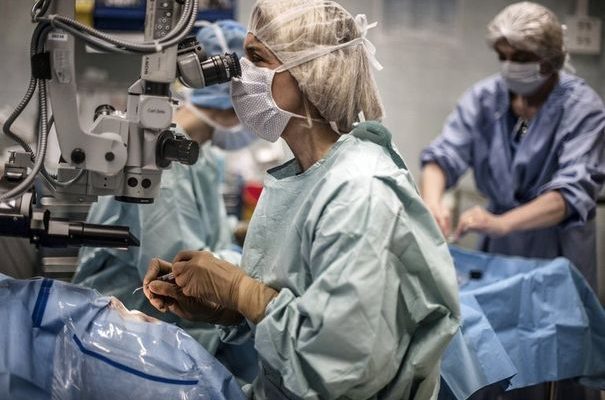One out of eighteen hospitalized patients in France is affected by at least one nosocomial infection. And this rebound is caused in part by the Covid, according to a national survey by Public Health France published this Friday, May 26, on these infections contracted in a health establishment, responsible for around 4,000 deaths per year.
After stagnating from 2012 to 2017 and falling steadily between 2001 and 2012, the proportion of infected patients increased between 2017 and 2022 (+ 14.7%), notes the health agency in a press release.
Compared to its European neighbours, France is in the middle range (17th out of 31 countries in 2017 for nosocomial prevalence). It will be necessary to wait until 2024 for the finalization of the surveys carried out in Europe in 2022. The health authorities estimate that some 4,200 the number of deaths linked to nosocomial infections each year in France.
Nosocomial Covid infections
The Covid epidemic has weighed, directly or indirectly: “The proportion of infected patients is higher than that of five years ago, but nosocomial Covid infections represent half of the increase”, reports to AFP Anne Berger-Carbonne, Head of the Healthcare-Associated Infections and Antibiotic Resistance Unit at SpF.
In his eyes, “it’s a very wide photograph which is not so bad in the wake of the terrible Covid crisis. We expected worse”.
If we exclude nosocomial Covid, the proportion of patients infected in 2022 remains on the rise (+ 7.5%) but “not significantly” compared to that estimated in 2017, according to the health agency. She thus observes that “compared to 2017, patients hospitalized in 2022 presented increased risks of infectious complications”, due to more vulnerable profiles or the use of invasive care devices.
In 2022, hospital activity remained affected by the Covid pandemic but also by the “ambulatory shift” in the health system, “so that people hospitalized were in a more serious situation”, in the eyes of Anne Berger-Carbonne. . The ambulatory shift is accompanied by a shortening of hospital stays, and long stays are reserved for the most serious cases.
Resuscitation services are the most affected
Nosocomial infections are more often seen in intensive care units (almost one in four infected patients), which treat more vulnerable patients exposed to invasive devices (catheter, respiratory assistance, urinary catheter). Urinary infections, linked to surgery, pneumonia, bacteraemia (presence of bacteria in the blood) remain the main manifestations of the scourge.
Four bacteria, including Escherichia coli and Staphylococcus aureus, are involved in nearly one in two cases of nosocomial infection in hospitals, almost as in 2017.
Antibiotic resistance
Another lesson from the survey: around one in six hospitalized patients receives antibiotic treatment, a proportion up 7.5% compared to 2017. “It’s not a very good sign”, notes the specialist from Public Health France . Antibiotic resistance – the fact that certain bacteria eventually become resistant to antibiotics – is indeed considered a major threat by global health authorities.
One in four patients is treated with antibiotics in intensive care, one in two in medicine or surgery, according to the SpF survey.
However, the Covid context may have changed the priorities – with less effort on the measured use of antibiotics -. And “antibiotic resistance prevention teams have not been spared by the healthcare crisis”, notes Anne Berger-Carbonne.
For the public health agency, these results “encourage us to continue preventive actions” for nosocomial infections by targeting them on the most frequent (urinary tract infections, pneumonia, surgical site infections, bacteremia). We must also “strengthen actions for the proper use of antibiotics”.
